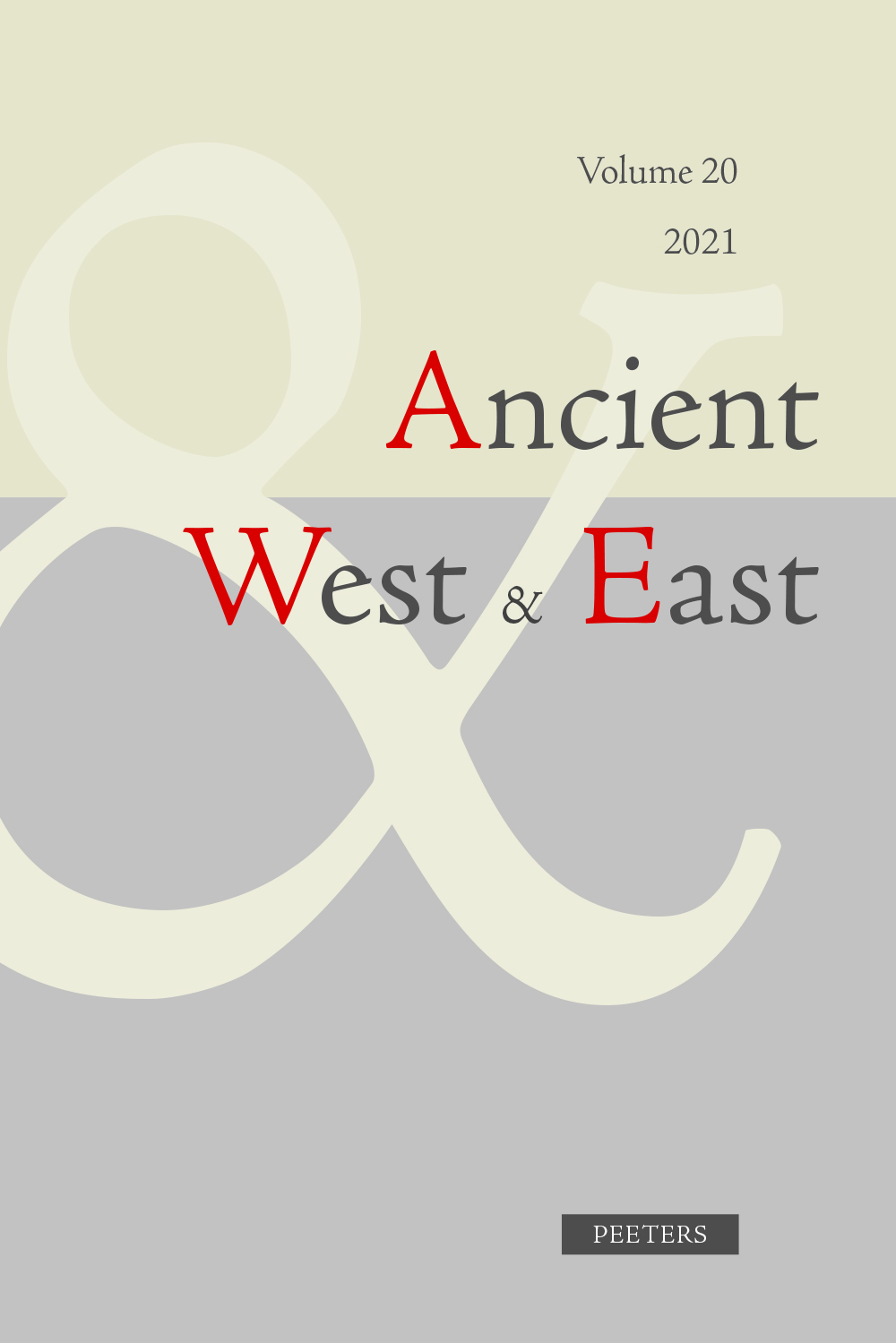 previous article in this issue previous article in this issue | next article in this issue  |

Preview first page |
Document Details : Title: The Late Archaic House at Monte Iato Subtitle: Greek-Style Architecture, Rirual Abandonment and the Politics of Indigeneity in Western Sicily (500-460/50 BC) Author(s): KISTLER, Erich Journal: Ancient West & East Volume: 19 Date: 2020 Pages: 43-78 DOI: 10.2143/AWE.19.0.3288558 Abstract : The Late Archaic house on Monte Iato, built around 500 BC deep in the mountainous interior of western Sicily, was one of the largest non-sacral buildings of its day. With its walls constructed entirely of stone and mud bricks, its multiple storeys, its tiled roof and red and white painted floors and walls, it was the monumental manifesto of a technological sophisticated architecture. In the Archaic period, comparable monumental architecture can be found only in urban or religious centres of the Mediterranean world. However, in the case of the house on Monte Iato, the banqueting rooms on the upper floor were topographical connected with the ‘Aphrodite Temple’ and its altar via a processional way and a ramp. Apparently, the upper floor served as a banqueting house, as seen in hestiatoria in close proximity to a temple and altar in Greek sanctuaries. All of this is discussed in more detail in the first section of the following paper. In the second section I present archaeological evidence suggesting that the house was abandoned in a ritual act around 460/50 BC. In the third section, I will examine the interplay between Greek-style architecture, local power building and the politics of being a native, and argue why the monumental phase on Monte Iato ended after just 50 years by an extensive process of de-monumentalisation, resulting in an epochal shift. |
 |


